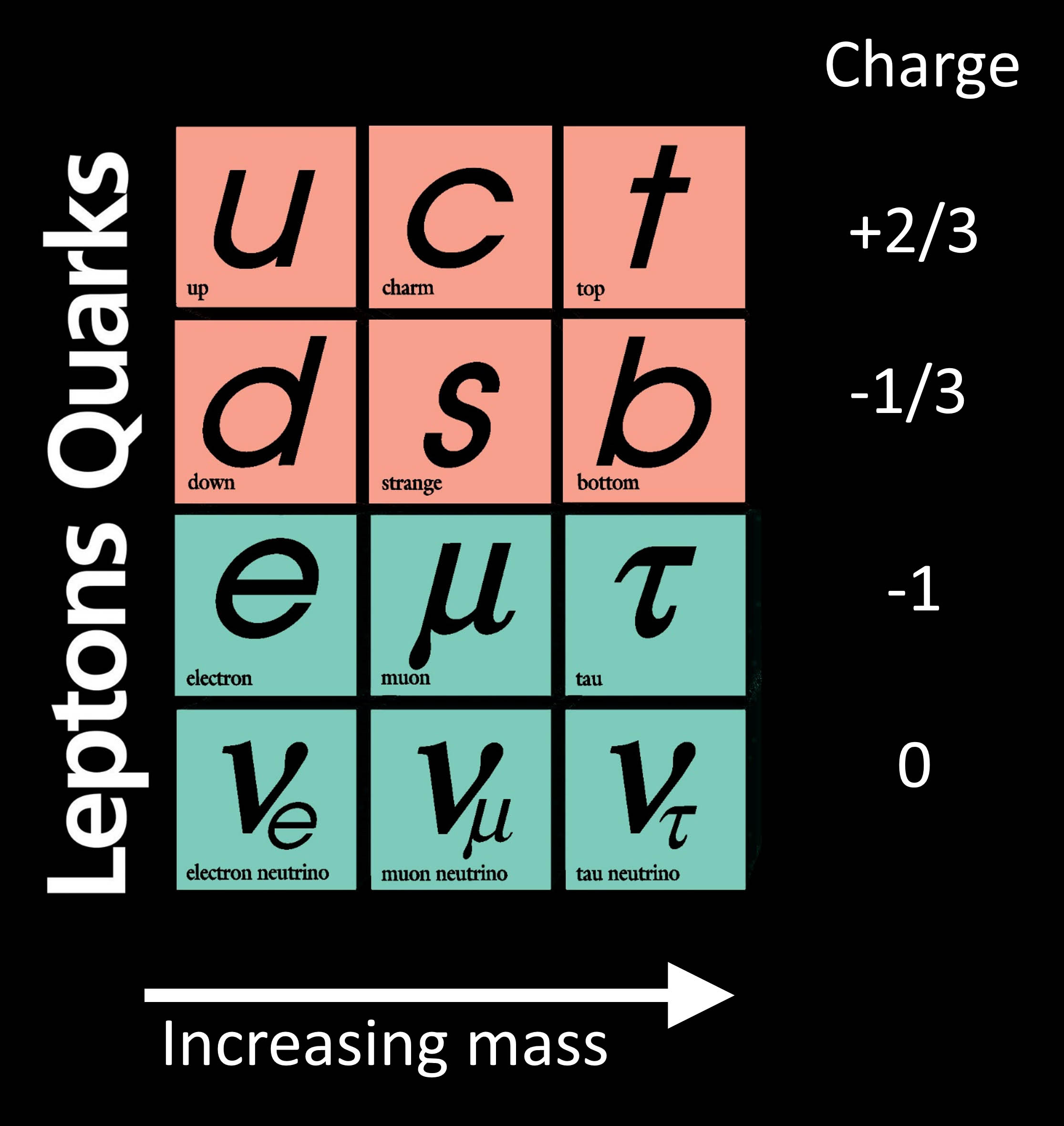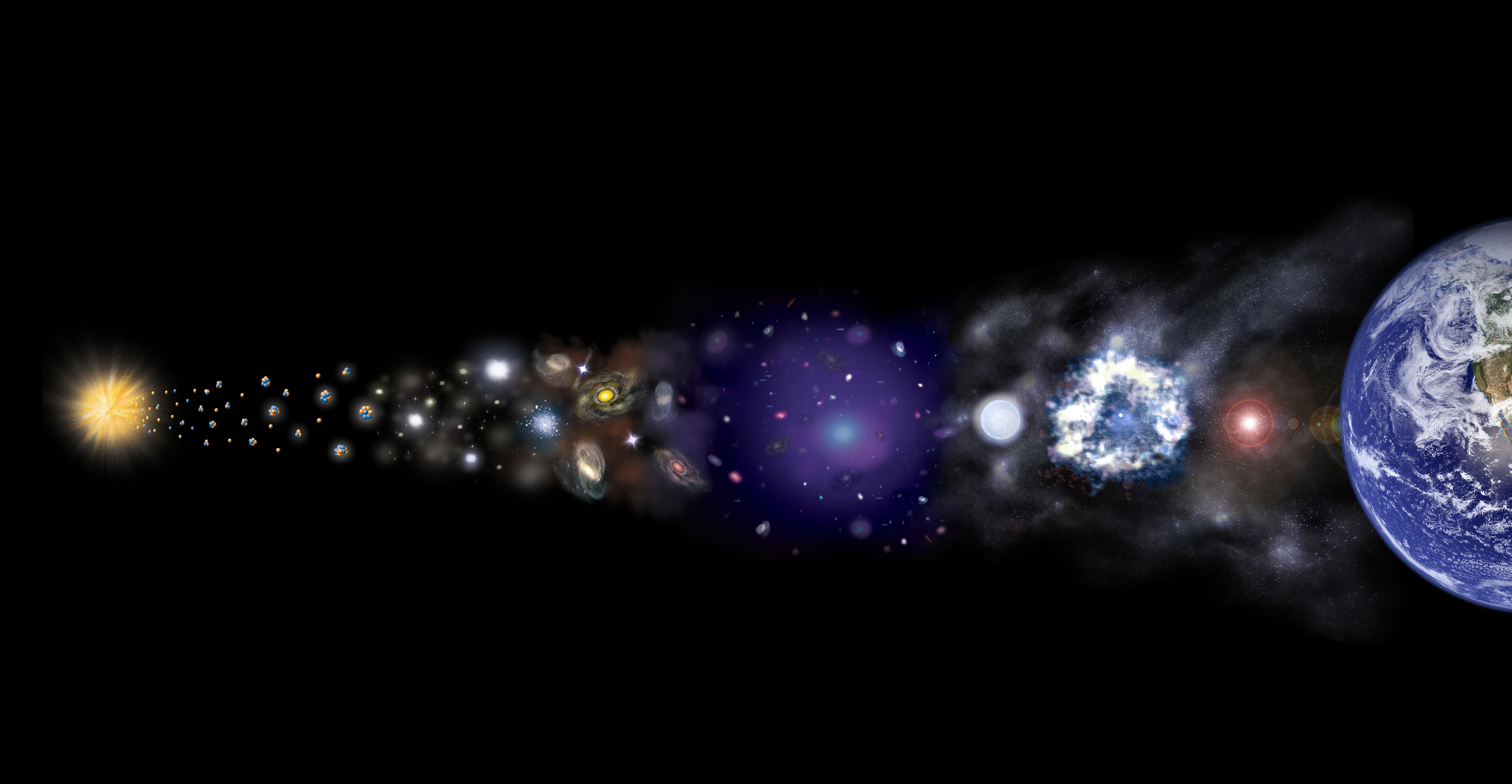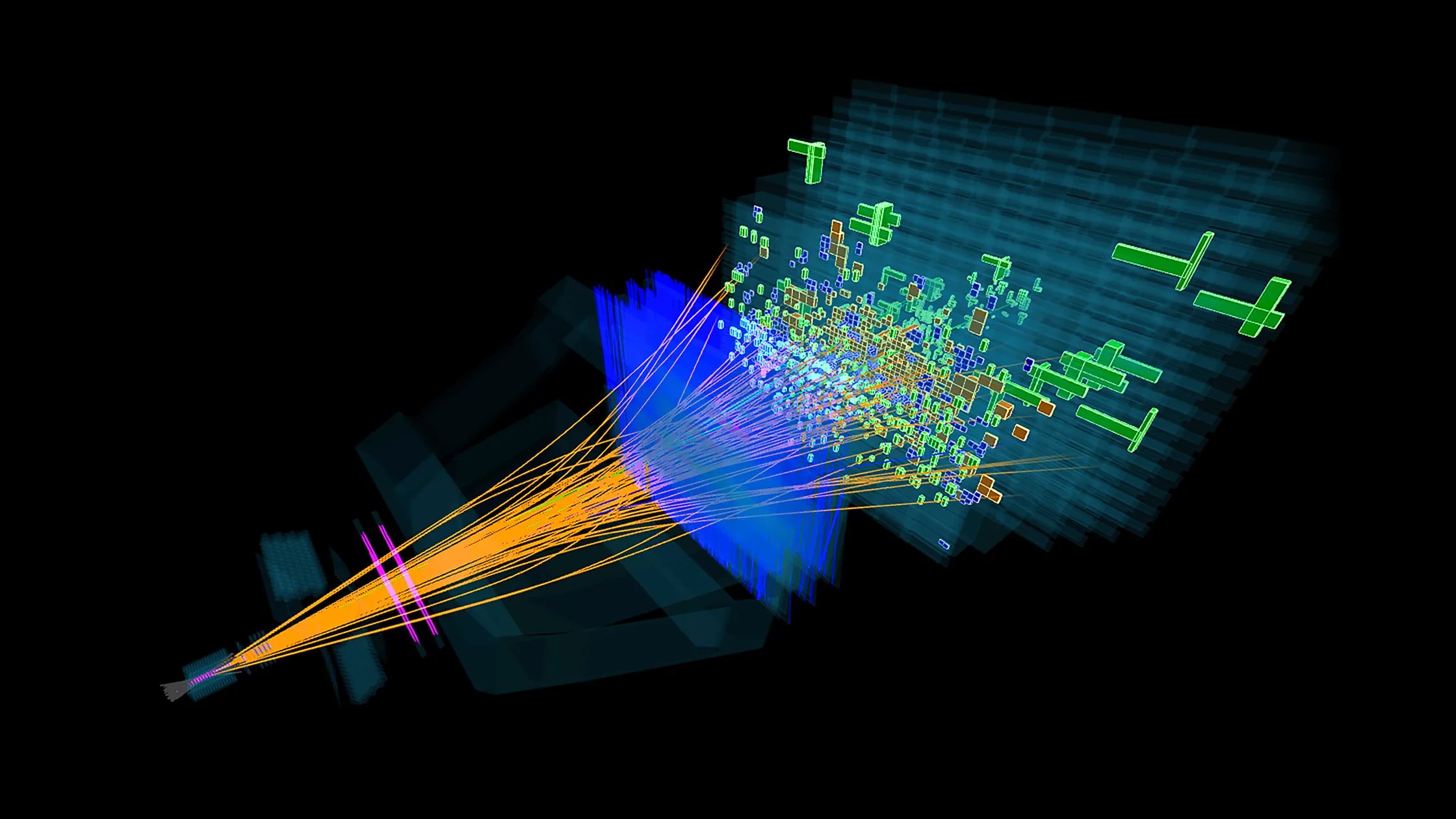Subatomic puzzle: Are quarks and leptons hiding another level of matter?

- Quarks and leptons are the smallest building blocks of matter currently known.
- When organized, quarks and leptons reveal a pattern, one that suggests the possibility of even smaller subatomic particles.
- It remains a mystery whether these smaller particles exist or if some other reason explains the pattern.
What is the most fundamental nature of matter? As early as 2,500 years ago, Greek philosophers debated this question. Democritus and his mentor Leucippus advanced the model most similar to that accepted by modern science. They proposed that at the smallest scale, the world was made of atomos (Greek for “uncuttable”).
Despite the similarities in their names, atomos are not the same as what we now call atoms. The term atomos was intended to describe the smallest building block of matter. In contrast, we know that atoms are built of even smaller particles: protons, neutrons, and electrons. And beginning in 1964, scientists realized that protons and neutrons were themselves composed of even smaller particles called quarks. The electron appears to have no smaller components and is a member of a class of particles called leptons. There are two varieties of leptons: one with an electric charge and the other electrically neutral. The neutral leptons are called neutrinos.
We currently know of six types of quarks, with somewhat silly names: up, down, charm, strange, top, and bottom. Up and down quarks are found inside protons and neutrons: protons (up, up, down) and neutrons (up, down, down). There are also six types of leptons, three with an electric charge and three neutral. The three charged leptons are the electron, muon, and tau leptons. The three neutral leptons are the electron neutrino, muon neutrino, and tau neutrino.

The quarks and leptons can be organized in a way that reveals a pattern. Begin with a unit system in which the proton has an electrical charge of +1, the electron has a charge of -1, and the neutron has a charge of zero. In this system, the up, charm, and top quarks all have a charge of +2/3. The down, strange, and bottom quarks have a charge of -1/3. The electron, muon, and tau lepton all have a charge of -1, while all of the neutrinos have zero charge.
The particles can then be grouped into three distinct families called “generations.” The first generation contains the up and down quarks, the electron, and the electron neutrino. The second generation contains the charm and strange quarks, the muon, and the muon neutrino. Finally, the third generation contains the top and bottom quarks, the tau lepton, and the tau neutrino.
All ordinary matter can be made of first-generation particles. The particles of the second and third generations are unstable and quickly decay into the particles of the first generation. They are also progressively more massive than the particles of the first generation.
The origin of this pattern is not yet understood. Why should there be three generations of matter, when our universe seems only to be made up of first-generation particles? This is one of the great unanswered questions of physics.
While scientists do not have an answer to this question, some researchers believe that the pattern is evidence for the existence of particles smaller than quarks and leptons.
Historical analogs
History teaches us that an unexplained pattern in subatomic physics can often be explained by the presence of smaller particles. For example, in 1869 Dmitri Mendeleev invented the periodic table of chemical elements. He organized the elements with similar reactive properties together in columns. Elements in the first rows are lighter and grow heavier in the rows that follow.
Scientists in the late 19th century could not explain the pattern they saw in the periodic table; however, we now understand why. Elements in each column had similar chemical reactivities because they had similar configurations of electrons. For example, the alkalis (e.g., hydrogen, lithium, sodium, and potassium) are reactive because of an unpaired electron in their outer orbital. In contrast, the noble gases (e.g., helium, neon, argon, krypton, and xenon) are chemically inert because their orbitals are filled, leaving no electrons to interact with other atoms.

The increase in mass as one moves from the upper to lower rows of the periodic table is due to a steadily increasing number of protons and neutrons. In short, the patterns in the periodic table that were unexplained in the late 19th century became fully explained in the early 20th century when the atomic structure was discovered.
There is another similar, but less familiar, example of patterns in subatomic physics hinting at a later-discovered substructure. These patterns were observed from the mid-1940s through the mid-1960s, an era in which physicists discovered what they called “the particle zoo.” Using particle accelerators, physicists collided protons or electrons into targets and created particles never before observed. Hundreds of different kinds of particles were discovered. These particles had an array of properties — different electrical charges, lifetimes, masses, subatomic spins, and a mysterious property called “strangeness.”
Strangeness was assigned to particles that were easy to make but decayed slowly. A particle with a strangeness of 1 would decay into normal particles. A particle with a strangeness of 2 would decay into strange particles, which would then decay into normal particles.

When researchers arranged the particles discovered in the middle part of the 20th century, using charge and strangeness as organizing parameters, the result was geometrical patterns. These patterns were explained by invoking the existence of quarks. Different combinations of the up, down, and strange quarks generated the geometrical patterns.
Quark and lepton structure
Currently, the patterns seen in the quarks and leptons remain unexplained, but given the lessons of history, it seems reasonable to hypothesize that quarks and leptons might themselves be created of still smaller particles. There is even a name for these as-yet-undiscovered and wholly hypothetical particles. They are called preons.
There are many different preon models, but none has been confirmed. Indeed, there are reasons to doubt the existence of preons.
The first reason is that the size of quarks and leptons has not been observed. That doesn’t mean that we know nothing. We have used the most powerful microscopes in attempts to image them. The smallest size that these microscopes can resolve is about 1/1000 the size of a proton. These measurements saw no size; therefore, we know that quarks and leptons must be smaller than about 10-18 meters. If preons are found inside quarks and leptons, they must be even smaller than that.
In addition, the laws of quantum mechanics pose a problem for objects of this size.
The Heisenberg uncertainty principle says that we cannot simultaneously know the location and motion of an object. To know one well is to know the other poorly. If we can constrain the size of preons to exist within objects as small as 10-18 meters, we have little knowledge of their motion. They could be moving very fast, which means they could have lots of energy. Using Einstein’s equation E = mc2, that means that preons must have a mass that is over 1,000 times that of a proton. Given that the up quark has a mass of about 0.003 times that of a proton, we are left with the very perplexing situation in which an object with a mass of 0.003 times the proton contains within it at least one object with a mass of 1,000 times that of a proton.
This sounds nonsensical, but it’s not impossible. It could be that there is a large and negative energy tying together the preons. If that’s true, then the negative binding energy could cancel the large positive mass energy of the preons. But this is all speculation at this point. The whole preon idea could be wrong; indeed, the preon idea is not favored in the physics community.
However, the question of why there are patterns in the families of quarks and leptons remains a complete mystery. Those patterns are telling us something, but it’s going to take a stroke of genius (and some good experimental work) to tell us what.





